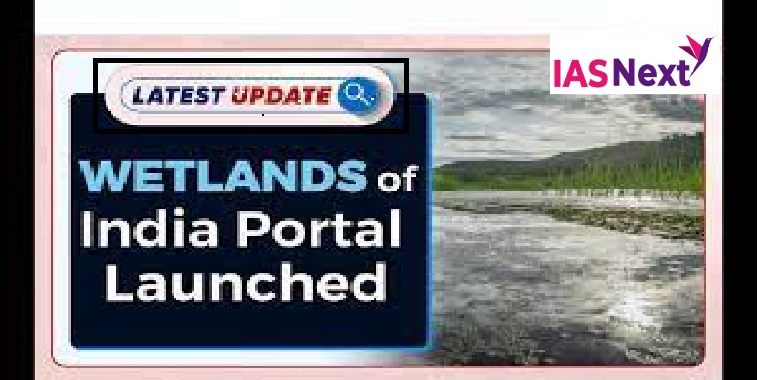CURRENT AFFAIRS
Get the most updated and recent current affair content on Padhaikaro.com
Launch of ‘Wetlands of India’ Portal
- IAS NEXT, Lucknow
- 10, Nov 2021

Context: On the occasion of Gandhi Jayanti and heralding the Iconic Week of Azadi ka Amrit Mahotsav of MoEFCC (4-10th October 2021), a web portal – ‘Wetlands of India Portal’, giving details on wetlands of the country, was launched by the Minister of Environment, Forest and Climate Change.
- The portal is a single point access to all information relating to wetlands – capacity building material, data repository, videos and and information for students.
- A dashboard for each State and UT has been developed to access the portal and populate it with information of wetlands in their administration.
- The project is commissioned by the German Federal Ministry for the Environment, Nature Conservation and Nuclear Safety (BMU) under the International Climate Initiative (IKI).
Important value additions
Wetlands
- They are highly productive ecosystems that provide the world with nearly two-thirds of its fish harvest.
- They play an integral role in the ecology of the watershed.
- They provide an ideal environment for organisms that form the base of the food web and feed many species of aquatic animals.
- They help in carbon sequestration (removal of carbon dioxide from the atmosphere).
- They provide habitat for animals and plants and support plants and animals that are found nowhere else.
- They are also an important source of ground water recharge.
There are six kinds of wetlands:
- Marine or coastal wetlands which include coastal lagoons, rocky shores, and coral reefs
- Estuarine wetlands including deltas, tidal marshes and mangrove swamps
- Lacustrine wetlands associated with lakes
- Riverine wetlands along rivers and streams
- Palustrine wetlands, essentially marshes, swamps and bogs
- Man-made wetlands like fish, shrimp and farm ponds, irrigated agricultural land, salt pans, reservoirs, gravel pits and canals.
Threats to Wetlands
- Urbanization
- Agriculture: Construction of a large number of reservoirs, canals and dams have altered the hydrology of the associated wetlands.
- Pollution: Due to mercury from industrial sources
- Climate Change: Increased air temperature; increased frequency of storms, droughts, and floods; increased sea level rise
- Dredging and sand mining: Dredging of streams lowers the surrounding water table and dries up adjacent wetlands.
- Exotic Species: Exotic introduced plant species such as water hyacinth and salvinia clog waterways and compete with native vegetation.